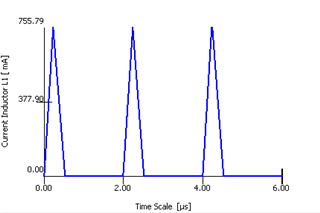Tool/software:
Hi,
I would like to use the TPS7H4010-SEP buck converter in a very light load application. Input voltage can vary from 26V - 32V and the output is a 5V 100mA max load. Nominally the load will be 20-30mA. I expect the part to operate in PFM mode continuously - is there any concern to doing this?
The datasheet states when peak inductor current is smaller than IPEAK-MIN the part operates in PFM mode. What is the value of IPEAK-MIN for this device? Is this something that is characterized over temp or radiation? I am trying to ensure my inductor is sized correctly for the peak current seen in PFM mode.
Also, how will I know what switching frequency the device is operating at when it is in PFM mode. Is there a way to calculate this?
Thanks for the help,
Sean


